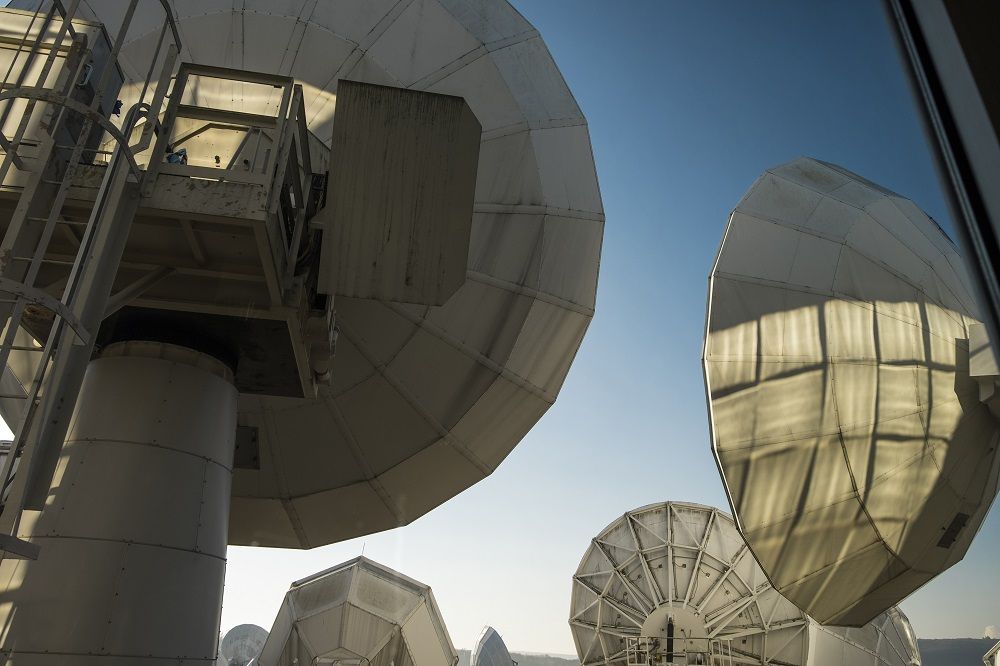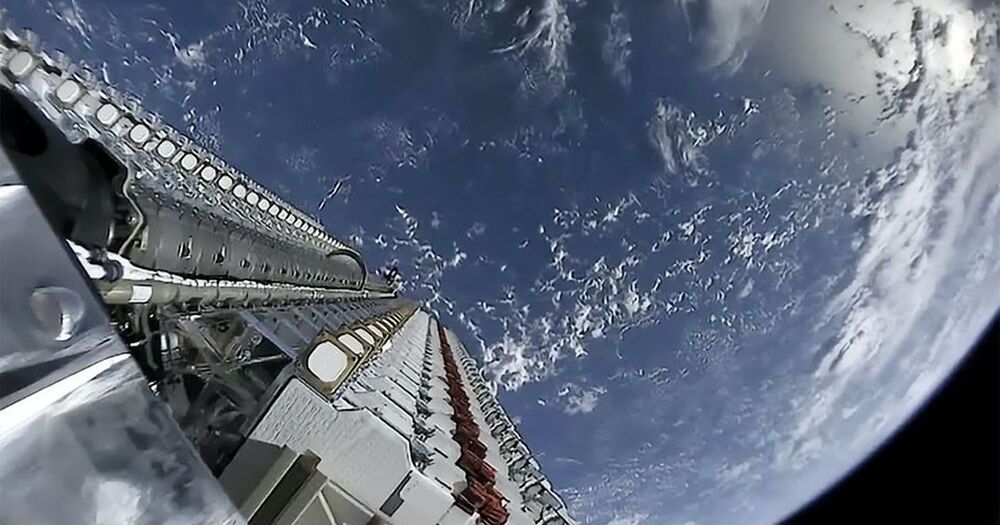Clouds on Mars — SpaceX Starlink — Science images.
NASA’s Curiosity rover captured rare clouds on Mars as telescopes peered into the center of the Milky Way and cosmonauts walked in space this week.


With the massive proliferation of data-heavy services, including high-resolution video streaming and conferencing, cloud services infrastructure growth in 2021 is expected to reach a 27% CAGR. Consequently, while 400 gigabit ethernet (GbE) is currently enjoying widespread deployment, 800 GbE is poised to rapidly follow to address these bandwidth demands.
One approach to 800 GbE is to install eight 100 gigabit per second (Gbps) optical interfaces or lanes. As an alternative to reduce the hardware count, increase reliability, and lower cost, a team of researchers at Lumentum developed an optical solution that uses four 200 Gbps wavelength lanes to reach 800 GbE.
Syunya Yamauchi, a principal optical engineer at Lumentum, will present the optimized design during a session at the Optical Fiber Communication Conference and Exhibition (OFC), being held virtually from 06–11 June, 2021.

TAMPA, Fla. — Satellite operators have cleared a portion of C-band in a key step toward giving the spectrum to U.S. wireless companies in December.
Work has now started on installing filters on ground antennas across the United States, so wireless operators can use the lower 120 MHz of C-band for 5G without interfering with satellite broadcast customers.
Intelsat and SES, the satellite operators with the largest share of the 500 MHz C-band in the U.S., will get more than $2 billion from the Federal Communications Commission (FCC) if they can hand over the 120 MHz swath of frequencies by Dec. 5.

For that, they will need the quantum equivalent of optical repeaters, the components of today’s telecommunications networks that keep light signals strong across thousands of kilometers of optical fiber. Several teams have already demonstrated key elements of quantum repeaters and say they’re well on their way to building extended networks. “We’ve solved all the scientific problems,” says Mikhail Lukin, a physicist at Harvard University. “I’m extremely optimistic that on the scale of 5 to 10 years… we’ll have continental-scale network prototypes.”
Advance could precisely link telescopes, yield hypersecure banking and elections, and make quantum computing possible from anywhere.


Germany wants to help citizens in rural areas get better access to the world wide web by supporting the purchase of hardware for satellite internet services such as Elon Musk’s Starlink, the transport ministry said on Monday.
The planned subsidy scheme will be open to all providers who offer wireless internet connections in rural areas, for example through satellites or directional radio links, the ministry said.
Coalition talks about the details of the voucher scheme are still ongoing and the aim is to subsidize the purchase of the technical equipment, it added.


In a paper for Nature this month, researchers claim the development of mega-constellations like Starlink “risks multiple tragedies of the commons, including tragedies to ground-based astronomy, Earth orbit, and Earth’s upper atmosphere.”
Perhaps the biggest effects could come as the satellites start to deorbit, sparking what could be a major experiment in geoengineering.
This week’s SpaceX launch is the 29th batch of Starlink satellites since the first in May 2019, building out the firm’s internet connectivity constellation. Starlink aims to offer high-speed and low latency internet access almost anywhere with a view of a ground terminal.
SpaceX has now launched 1737 satellites for Starlink, with 951 operational. Starlink satellites typically take a few months to move into position and start operations. Starlink is already the biggest single constellation in space, but the firm has applied for permission to launch up to 42000 satellites.

Is this the reason why the general public view the emerging field of regenerative medicine with such scepticism? Has a combined cultural history of being bombarded with empty promises of longevity made us numb to such a prospect? Possibly, although I believe it might go deeper than old fashioned scepticism. After all, our species is hardly a stranger to believing something if we desire for it to be true, regardless of how much evidence is presented to us.
Maybe we are simply experiencing just another example of humans finding dramatic change to our way of life hard to comprehend and accept. After all, practically every major change in our recent history was largely believed to be an impossibility by the general public, right up until the point that it became the norm. Everything from the aeroplane to the internet was seen as science fiction, but yet today they are integral parts of our lives. Now, this is not to say that everything the general public is sceptical of will inevitably turn out to prove them wrong, but lessons from our history do show that when it comes to scientific progress, the public will not believe it until they can see it.
Some would believe that scepticism towards regenerative medicine strikes at something much deeper in our psych, as it threatened to fundamentally change our entire outlook on the world. For our entire lives, we have been taught by our interactions with others exactly how life is supposed to progress. You are supposed to suffer a gradual decay of mental and physical abilities, until eventually you die. That is just how it is, and if that were to ever change then we would all have to change how we think about the world. The concept of a 125 year old with the appearance of a 25 year old seems bizarre to us right now, and to many the idea of ever lasting health just goes against their fundamental beliefs of how the world functions to such an extent that they cannot comprehend anything different. Some would even go far as to defend the ageing process as being an integral part of life, displaying what can only be described as ‘Stockholm syndrome with extra steps’.
I could probably be described as a SpaceX enthusiast. I catch their launches when I can, and I’ve watched the development of Starship with great interest. But the side-effect of SpaceX’s reusable launch system is that getting to space has become a lot cheaper. Having excess launch capacity means that space projects that were previously infeasible become suddenly at least plausible. One of those is Starlink.
Starlink is SpaceX’s satellite Internet service. Wireless and cellular internet have helped in some places, but if you really live out in the sticks, satellite internet is your only option. And while satellite Internet isn’t exactly new, Starlink is a bit different. Hughesnet, another provider, has a handful of satellites in geostationary orbit, which is about 22000 miles above the earth. To quote Grace Hopper, holding a nearly foot-long length of wire representing a nanosecond, “Between here and the satellite, there are a very large number nanoseconds.”
SpaceX opted to do something a bit different. In what seemed like an insane pipe dream at the time, they planned to launch a satellite constellation of 12000 birds, some of them flying as low as 214 mile altitude. The downside of flying so low is that they won’t stay in orbit as long, but SpaceX is launching them significantly faster than they’re coming down. So far, nearly 1600 Starlink satellites are in orbit, in a criss-crossing pattern at 342 miles (550 km) up.